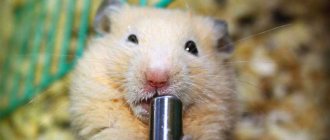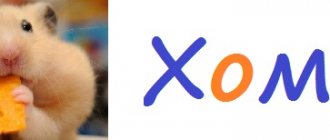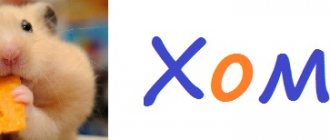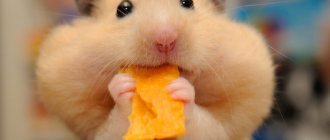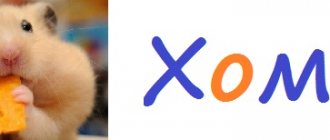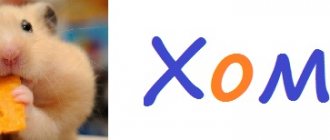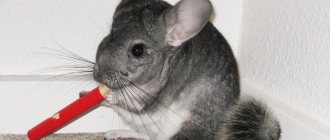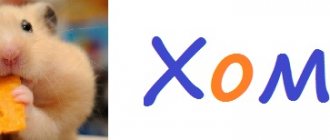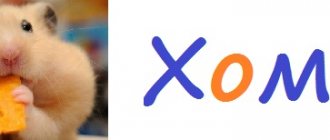How long can a chinchilla live without water and without food?
Without harm to health, a chinchilla can go without food for about 3 days, and without water for only 24 hours. Values may vary depending on the age and condition of the animal. In any case, it is not recommended to conduct experiments and leave the rodent without water and food for a long time.
For certain diseases - diarrhea or indigestion, a specialist may prescribe a diet. During this period, you are allowed to feed your pet only hay.
Under no circumstances should you leave a chinchilla without water. During illness and in the summer, special attention should be paid to and monitor the level of liquid in the drinking bowl.
When transporting a rodent, for example, to a new place of residence, it is not recommended to give water. Otherwise, during transportation, the chinchilla may experience intestinal upset. You can offer your pet a piece of apple. The liquid contained in this fruit will allow the chinchilla to survive for some time without water. However, it is better not to feed too many apples to a rodent, otherwise diarrhea may occur.
Chinchilla diseases - symptoms and treatment
Poisoning
Poisoning can happen if a chinchilla eats unsuitable food or food that is not suitable for it.
In case of poisoning, the animal may refuse to eat; At the same time, the chinchilla is lethargic and weakly active. Drooling is common.
In case of serious poisoning, treatment, unfortunately, is not always effective - but timely action will help increase the chances of curing the chinchilla.
Possible remedies that will help with chinchilla poisoning:
- enterosgel
- gamovite
- catozal (to speed up metabolism)
- traumeel
To prevent dehydration, you can administer saline solution in a dosage of 10 ml, as well as glucose solution.
Lichen
It is an unpleasant scourge for any animal, and chinchillas are no exception.
With this disease, areas appear on the body where hair is partially or completely absent. In this case, irritation may occur in such areas. It often happens that the first manifestations of lichen are found in the area of the animal’s nose and ears.
Hair loss in chinchillas can be caused by various parasites. If you live in a city, it is advisable to scrape the affected area of skin. A specialized laboratory will help identify not only the parasite itself, but also select a drug that will effectively deal with it.
If your city does not have a specialized laboratory where such an analysis can be performed, you can use broad-spectrum drugs.
It is possible to use the following drugs in the treatment of this chinchilla disease:
- Vakderm-F – injections of 0.3 ml with an interval of 1-2 weeks. The drug can only be used for adults, because it can slow down or completely stop the animal's growth process. Use is permitted for chinchillas from 6 months of age.
- Lamisil and Exoderil - suitable for both adult animals and small chinchillas. The affected areas of the body are treated with a spray twice a day for 14 days.
It should be noted that lichen is a highly contagious disease. Therefore, a chinchilla that has been diagnosed with lichen should be isolated from other individuals and any contact should be excluded - a quarantine regime is appropriate. To minimize the likelihood of infection with lichen, you can use fungistol, and it is also necessary to carry out regular hygiene of rooms and cells. Using a bactericidal lamp will not hurt.
Conjunctivitis
Bacterial inflammation in the eye area occurs quite often in chinchillas. In this case, the animal will experience discharge, which, depending on the extent of the process, can be scanty or abundant; sometimes purulent contents may be discharged. For a bacterial infection, antibiotics can be used for treatment.
In general, the following remedies can be used to treat conjunctivitis and inflammation of the eye area in chinchillas:
- ointments – tetracycline, hydrocortisone
- Maxidin drops
- colloidal silver rinsing
- in case of damage to the cornea, clouding of the vitreous body, it is possible to use an already proven product - Taufon drops (or analogues)
Bites
Sometimes these rodents can be aggressive. Chinchillas do not always manage to get along with each other. This is a sure way to cause injuries, scratches, bites, and abrasions. Bites can be superficial or deep.
For large wounds, you need to immediately begin helping the animal. Take him to a place where he will be protected from the encroachments of other individuals - provide the chinchilla with maximum peace. It is advisable to clean the damage from blood, and treat the wounds with hydrogen peroxide and Levomekol. Injections of Catozal and Traumeel will speed up the recovery of the body.
It happens that with strong bites the animal refuses food. In this case, you need to administer saline and glucose. Moreover, vitamins can also be diluted in the latter to maintain the animal’s strength. If this works, you need to force-feed the chinchilla; if not, be sure to continue using glucose in combination with saline solution.
Chinchillas often bite and damage each other when mating. Therefore, it is better that someone is at home at this time, and if aggression occurs, the animals should be immediately placed in different cages.
Invasion
For chinchillas, infestation is a serious disease. When infested, a chinchilla may refuse to eat, and its behavior will become lethargic, apathetic, and weakly active. The chinchilla may develop severe bloody diarrhea. In case of invasion, it is possible to perform a complex surgical operation to remove the affected part of the intestine, but the likelihood of a positive outcome is low.
Diarrhea
For diarrhea in chinchillas, it is possible to use oak bark, as well as medicines - Smecta, Linex. It is important to stop the dehydration process - therapeutic measures must be started quickly. During treatment, the animal's diet should consist primarily of hay and liquid.
The cause of chinchilla diarrhea can also be previous treatment with antibiotics - often after completing a course of drugs, dysbiosis develops in the intestines. You can restore normal intestinal functioning by using boluses from a healthy animal.
Constipation
When constipated, a chinchilla's belly is swollen, the animal experiences weakness, and the boluses are small. In such a situation, the main task is to restore intestinal motility. For this purpose, the animal should walk a lot, but it is also possible to use a number of therapeutic agents:
- Vaseline oil - given to drink several times a day or injected into the rectum using a syringe
- in severe cases, the use of Cerucal injections is justified
The possibility of a chinchilla swallowing its own hair with the formation of clots and, as a result, intestinal obstruction has not been proven in chinchillas - however, if there is suspicion, the use of Malt paste is possible.
Rectal prolapse
This problem in chinchillas in most cases is a direct consequence of constipation, the manifestations of which were described above. Constantly straining to have a bowel movement eventually leads to bowel prolapse. In this case, part of the bloody intestine (usually no more than 2-3 cm long) comes out of the anus.
In case of prolapse of part of the intestine, restoration measures must be started as soon as possible, otherwise necrosis of the prolapsed area is possible. For self-reduction, the prolapsed area must be lubricated with ointment and then adjusted using a thermometer. After a few days, the chinchilla should have a bowel movement.
It is better to trust intestinal adjustments to experienced veterinarians and not to do them yourself - this procedure requires some skill.
Dental diseases
Dental diseases are also common in chinchillas. At the same time, their color changes, and the animal may develop “drooling” when the teeth grow incorrectly. At the same time, sometimes the chinchilla is wet in the neck area. If it progresses, the teeth may take on an unsightly shape. The skin on the animal's face may also be damaged.
It is easier to deal with the problem in the early stages. It is not always possible to cure a neglected process.
For treatment, special feeds enriched with phosphorus compounds are used, and vitamins must be added to the diet. It is possible to add sodium phosphate in powder form to the feed.
If a chinchilla has lost a tooth, the place where it fell out can be treated with Metrogyl Dent gel.
Inflammation of the feet
Inflammation of the feet sometimes occurs in chinchillas, and in most cases the hind legs are affected. If this condition is not treated, surgery may be required in the future. To treat pododermatitis, special medications are used, which a veterinarian will help you choose.
Colds
A chinchilla can get a cold. An animal’s body temperature is dangerous at about 38 °C, and at 39 °C there is a risk to the chinchilla’s life. When a chinchilla has a cold, they often develop a severe runny nose.
To speed up recovery, you need to insulate the place where the animal is, eliminate possible drafts, and clean the nest from dust. Also an important factor in a quick recovery is enhanced nutrition.
Drinking bowl for chinchilla
You can purchase a drinking bowl at a pet store, or make it yourself. When choosing a design, a number of requirements should be taken into account:
- volume not less than 50 ml;
- closed type;
- the presence of a strong attachment to the cage.
Among the huge variety of drinking bowls for rodents, the following types can be distinguished:
- Automatic . It is an inverted bottle with a lid, to which is attached a metal tube with a ball at the end, which does not allow water to spill out.
- Drip . This design is easily fixed to the cage bars in a vertical position. Water comes out of the bottle drop by drop through a tube, which is why the drinking bowl got its name.
- Nipple . Unlike the automatic model, this drinker contains a lever on the lid. The chinchilla presses its muzzle on this nipple so that water flows out.
Forecast
At this stage the animal is practically doomed. The fact is that the stomach and intestines of a rodent are thin-walled organs, and the nature (hemorrhagic) and rapidity of damage do not allow the provision of surgical assistance, the use of probing and enemas. And there is no point in this. Due to the lost ability to contract, the organ becomes inoperative. In appearance, it is a film soaked in blood, overstretched with gases. Attempts at this stage of the disease to “start”, to force the gastrointestinal tract to contract with the help of drugs, are usually accompanied by increased pain and sometimes lead to rupture of the intestine in the places of its greatest damage. Therefore, in the treatment of this disease, special attention should be paid to the early, very first signs of illness, and this is a decrease in activity, appetite, and a decrease in the volume of feces (small feces).
What kind of water to give
It is recommended to give your chinchilla clean filtered or bottled water. You should not use boiled water, which has been subjected to harsh cleaning and contains insufficient amounts of useful microelements.
Apart from plain water, the rodent should not be given any liquid (juice, tea or other drinks). A healthy animal needs only clean water, the temperature of which is between 15-18°C.
During illness, on the recommendation of a specialist, medications are added to the water bowl. They must be given strictly according to the instructions.
When treating diarrhea, chinchillas are given a decoction of oak leaves or herbs, or water with added sugar. For severe symptoms, 1 tsp is enough. If you exceed the dose, the animal will have a reverse reaction in the form of constipation.
First aid
First of all, owners need to start force-feeding the animal with crushed granules with water, baby cereal porridge without sugar. To reduce gas formation, you can give espumizan in a dose of 0.3-0.8 ml 2-4 times a day, to improve intestinal function - metoclopramide 1/6-1/8 tablet. 2-4 times a day (in advanced cases it can provoke pain), probiotics and contact a veterinarian as soon as possible. In more severe cases, electrolyte solutions are used under the skin, antiulcer drugs, and painkillers. To clarify the diagnosis, the clinic usually orders an x-ray.
Gastrointestinal atony develops very quickly in chinchillas and guinea pigs, so it is necessary to act at the first signs of the disease: lethargy and refusal to feed.
Tatyana Baranova, veterinarian, specialist in the treatment of exotic animals.
How much does a chinchilla drink?
The daily amount of water for each rodent depends on age, mobility and temperature in the room where the cage is installed. On average, a chinchilla consumes 15-25 ml of water per day. Baby chinchillas drink a little less per day than adults, and owners may not notice that the water in the drinking bowl is decreasing.
Even if the water in the drinking bowl decreases imperceptibly, it must be present in the cage. Every day you should wash the drinker and replace the liquid with fresh one.
If a rodent moves little, it drinks much less than its more active counterparts. It should also be noted that sick animals also drink little and need to be given extra attention.
If the room is too warm or in hot conditions in the summer, the chinchilla drinks more, and in colder seasons it reduces consumption.
In order to determine how much water the animal drinks per day, you should leave marks on the drinking bowl in the morning and check how much water has decreased by the next day. It's also not worth checking too often. The chinchilla is an animal that is active at dusk, and therefore this animal consumes water and food at night.
Reasons for refusing to eat
There can be various reasons for a chinchilla not eating well. Some of them are easier to eliminate, some require long-term treatment. An attentive livestock breeder must be able to notice any deviation in the animal’s behavior, because this is the only way to quickly identify “problems” in the pet’s health and help him in treatment.
So, possible problems due to which the fluffy may refuse to feed and drink may be the following.
Catarrh
This problem is inflammation of the gastrointestinal tract. Inflammation can be either a cold or have an acidic or alkaline form.
This problem is caused by loose stools, lethargy and refusal to eat. The cold may be accompanied by sneezing and constant scratching of the nose.
Such inflammation somewhat complicates the process of digesting food - if only because food entering the esophagus causes pain. Sometimes the stomach does not digest food at all. This causes the chinchilla to refuse food and water. Refusal of food makes the pet sleep more often, in a way “saving energy” of the body. As a result, the fluffy becomes lethargic.
How to fix such a problem? It is imperative to consult a veterinarian to determine the nature of the individual’s disease. The owner will not be able to verify such a determination on his own. The acidic, alkaline and cold forms are treated differently, different drugs are prescribed, and the effects of drugs occur on different organs and systems.
Each form requires a strict diet. Any food other than fresh hay and clean water is excluded. If the treatment process is successful, grated carrots, oat decoctions and crushed cereals are gradually introduced into the diet (oats are best digested). Regular food is introduced only after complete recovery.
Poisoning
A rather unpleasant situation that is caused by eating contraindicated foods. Contraindicated products include various poisonous herbs and salts. Eating rot and mold will have a negative impact on the animal’s well-being. This will make your pet refuse food.
Poisoning can be noticed by hearing the grinding of teeth and noticing how the chinchilla does not eat for a long time.
Salt poisoning is treated by feeding the rodent milk or vegetable oil. Soldering is carried out using a syringe. It is also necessary to introduce five percent calcium chloride under the skin. Young individuals are injected with a milliliter, adults - three. If necessary, you should contact a veterinary clinic, because an incorrect injection can cause injury.
Poisoning can be chronic.
The action plan when poisoning is detected should begin with identifying the entry of the toxic substance into the animal’s body. Next, you need to give your furry a vomiting agent and a laxative. Washing is carried out using clean water and crushed charcoal.
It is extremely important throughout the treatment of poisoning to monitor the amount of water in the drinking bowl. Salt poisoning causes severe thirst.
Dental diseases
Another reason why a chinchilla does not eat food may be various dental diseases. Eating food causes pain, so the animal tries to reduce the amount consumed to a minimum. This leads to severe weight loss and lethargy.
The treatment here is filing or complete removal of the hook teeth. This is carried out only in a veterinary clinic under anesthesia. You cannot carry out dental treatment procedures on your own.
Flatulence
With a large amount of green food in the diet, flatulence may occur. This occurs as a consequence of the fermentation process of undigested food in the body.
Such a nuisance is treated with adsorbent drugs.
Heatstroke
Heatstroke can occur if the conditions are not met or if you are in a hot climate for too long. This disease is expressed by the fact that the chinchilla becomes lethargic, begins to breathe more often and refuses to eat and drink. Severe overheating may cause convulsions.
First of all, you need to move your pet to the shade, to a cool and dark place. You can put a damp, cold towel on the animal's head. For convulsions, a solution containing caffeine is administered orally. Heartworms are given glucose and camphor oil.
Precise recommendations on actions in such cases should be given by a veterinarian.
Constipation
Constipation occurs as a result of disruption of the gastrointestinal tract, lack of water to drink, or lack of mobility of the pet. Constipation causes a refusal to eat, as it causes quite painful sensations in the furry one.
In such cases, laxatives or special enemas can help, some of which you can make yourself. Frequent constipation indicates improper functioning of the digestive system. This is an excellent reason to visit a doctor and have your furry pet examined.
Stroke
A stroke is an acute disorder of cerebral circulation. If this happens to a chinchilla, it will stop eating and drinking and will be lethargic and motionless. This, to be honest, is not the worst consequence of a stroke.
If such a problem occurs, you should immediately contact a specialist. Only he can tell you what is the right thing to do in this case.
Injury
Internal injuries are also a valid reason. Injuries can occur when a foreign body enters the gastrointestinal tract or when food is too hot or too spicy. This causes pain and the pet stops eating and drinking.
It is necessary to replace hard foods with softer ones and monitor the temperature of the food you eat. It is also important to do everything possible to heal the injury quickly. To receive precise recommendations on this matter, consult a veterinarian.
Bloating
Bloating can occur as a consequence of a change in food, poor quality food, or the presence of some kind of infection in the body.
Reviewing your diet can help with bloating. You need to try to identify the cause of the disease and eliminate it. If this does not help, you need to turn to medications aimed at eliminating bloating. A specialist doctor can advise on suitable ones.
Diarrhea
Diarrhea can occur due to poor nutrition, as a consequence of poisoning, or the presence of parasites in the body. Sometimes it’s enough just to review the composition of your pet’s food.
If a chinchilla suffers from this disease for a long time and a simple diet change does not help, you need to contact a veterinarian.
Why does a chinchilla refuse water?
Situations when a chinchilla refuses water can be very diverse. This is often due to the stress that the rodent experiences when changing the owner, the location of the cage, as well as the occurrence of noise and other stressful conditions in which the pet refuses to drink and eat.
What to do if your chinchilla does not drink water:
- If the animal has not touched the water bowl for more than a day, you can try changing the container and replacing the water with fresh water.
- If your chinchilla is stressed, add a small piece of dried apple instead of water. This approach will help provide the animal’s body with a small amount of moisture. When the rodent calms down, he will remember the drinking bowl again.
- If the animal has previously used a drinking bowl of a different shape, perhaps the animal is accustomed to this particular device. In such a situation, the chinchilla must be accustomed to the new design.
- As a last resort, you can give the rodent a drink from a syringe (without a needle). But for a chinchilla this is a lot of stress. The main indication for such actions is prolonged constipation.
What to do if your chinchilla won't eat or drink
Chinchillas belong to the order of rodents. They have an excellent appetite. They are constantly chewing and gnawing on something. Always choose the most delicious pieces from the feeder. Therefore, what a chinchilla does not eat is
may be a sign of illness.
reasons for loss of appetite . These little animals are very picky. They may refuse food that is not fresh. Also due to the same type of nutrition for a long time. They get bored with the same food and therefore lose their appetite. They may also not eat their food because they are expecting something tasty from you. Such cases do not happen often, but you should not forget about it.
Quite often, chinchillas lose their appetite after experiencing stress. Stress can be moving or moving in with another person. In such cases, it is recommended to leave the baby alone and treat him with his favorite treats. Gradually he will begin to get used to it and he will definitely have an appetite.
Loss of appetite as a symptom of the disease
If it’s not stress, then the reason is most likely the health of your pet. First, take a closer look at it. You need to understand if he has any other symptoms. The most common illnesses in chinchillas are heat stroke, dental problems and many others.
These diseases are the most common. You must understand that any disease can cause irreparable harm to your pet.
Inflammation of the gastrointestinal tract is accompanied not only by poor appetite. Chinchilla does not eat or drink
is in a lethargic state and has loose stools. A chinchilla can also sneeze and rub its nose. Inflammation can be acidic or alkaline. Your veterinarian will be able to determine this and prescribe the appropriate treatment for you.
How to accustom to a drinking bowl
Chinchillas are smart animals. You can get them used to drinking water fairly quickly. First, the rodent needs to be shown how the new device works.
- Bring the rodent to the drinking bowl.
- Press the lever to let the water flow.
- Give the chinchilla the opportunity to try to get water on his own.
- In some cases, the learning process must be repeated several times.
The drinking bowl is as important a component as the feeder and toys. If your pet stops drinking, it is necessary to identify the reason and act depending on the situation.
Video about which drinking bowl to choose and how each design works. What kind of water can be given to chinchillas, in what quantity and how often to change it.
Feeding chinchillas
Feeding is one of the most important processes in caring for pet chinchillas. Feeding chinchillas should be economical and as varied as possible, with the addition of natural vegetation.
By the nature of their diet, a domestic animal, like a wild animal, is a herbivore (phytophage), feeding on all parts of plants. Chinchillas get used to eating certain foods from an early age; they learn the skills of eating food from adults. This circumstance makes it possible to accustom young animals to eating one or another food that they have not eaten before.
What to feed your chinchilla?
Concentrated feeds must be included in the animal’s diet, as they are easily digestible and nutritious. These include grains and legumes. The grains of millet, wheat, barley, and corn contain a lot of minerals and vitamins, and also contain lipids and fats, so they have great nutritional value and are very important for rodents. Legumes - beans, lentils, peas contain carbohydrates, calcium, zinc and other beneficial substances. They are necessary in animal nutrition for the normal functioning of the body. You can also add various dried fruits (carrots, raw sunflower and pumpkin seeds) to your diet.
When answering the question: “What does a chinchilla eat?”, remember that hay . Its absence will lead to the death of the animal. Young dandelion greens, oat and wheat sprouts are suitable as hay; they contain fiber, minerals, etc. Animals are also given ordinary grass (plantain, burdock, nettle, strawberry leaves, etc.). Hay made from cereals and meadow grasses is best suited. Such greens should be just an addition to the diet. The hay needs to be well dried. If mold appears on such food, it should not be fed to animals. 25 grams of hay per day .
In addition, pets can be fed something more refined and tasty.
Method nine.
But still, one of the best ways to cool a chinchilla is to buy an air conditioner and set it to the most comfortable temperature for the animal - up to 20 degrees Celsius. But not all chinchilla breeders have the funds to purchase such expensive equipment. If you are not ready to buy such a device, you can purchase a mobile air conditioner. It is much cheaper and more compact - if not needed, it can be easily removed until the next heat wave. If you can’t afford a mobile air conditioner, don’t despair. You can make such a device yourself.
You will need: a five-liter bottle, a small fan or computer cooler and a funnel. Cut the top of the bottle and make a small hole in it. Insert the funnel there so that it does not fly out. Make a hole in the back of the bottle for the cooler. Place several small bottles of water inside the bottle. Now all that remains is to connect the entire structure to the network and place a homemade air conditioner next to the cage.
Now you know how to help your pet survive the heat, be it summer, early spring or winter. Which method to choose is up to you. And do not forget that in case of severe overheating, the chinchilla must be shown to the veterinarian. He will be able to prescribe medications that will help your pet bounce back after such stress and again delight you with its good appetite and frantic activity!

